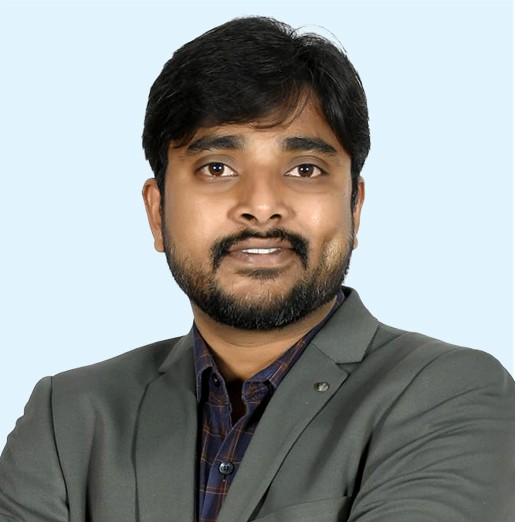What is Neurophysiology Centre?
Patients with learning impairments, cognitive problems, dementia, epilepsy, sensory disturbances of the peripheral and central nervous system, and several other neurological illnesses benefit from the neurophysiological monitoring tools offered at the Clinical Neurophysiology Center at KIMS.The Neurophysiology Hospital in Hyderabad varies from place to place. So before getting the treatment you must be aware of the Brain & Spine Care Hospital in Hyderabad and Neruo Hospital in Hyderabad or you may visit KIMS hospital as KIMS hospital is the Top Clinical Neurophysiology Hospital in Hyderabad.
During cranial base surgery, centre doctors use advanced neurophysiological monitoring to gather vital information regarding patient state. They are able to identify negative changes before difficulties emerge by capturing electrical signals at various neuraxis levels or at various muscle groups. Following that, surgeons can modify their surgical methods in an effort to avoid neurological impairments. The Center's team also performs functional brain mapping, a procedure that involves directly stimulating patients' brains with electricity while simultaneously documenting their brainwave activity in order to treat their epilepsy, brain tumours, and vascular abnormalities.the Neruo Hospital in Hyderabad varies from place to place. So before getting the treatment you must be aware of the Neruo Hospital in Hyderabad,Brain & Spine Care Hospital in Hyderabad. As the treatment cost may be differ but you can choose KIMS hospital as KIMS hospital is the Top Clinical Neurophysiology Hospital in Hyderabad.
Procedures & Treatments
In Hyderabad the Neruo Hospital in Hyderabad depends on a number of variables. To find out who the Best neurophysiologist in Hyderabad is, you must speak with the doctor.. But before knowing about the Neurophysiology Hospital in Hyderabad, you must contact the doctors of KIMS hospital about the problem as KIMS hospital is the Top Clinical Neurophysiology Hospital in Hyderabad
In both adult and paediatric difficult neurosurgery, orthopaedic, spinal, cardiothoracic, vascular, otorhinolaryngological, interventional neurology, and interventional cardiology procedures, intraoperative neurophysiological monitoring (IONM) can lower the risk of problems. The common modalities used to conduct IONM include electromyography (EMGs), transcranial motor evoked potentials (TcMEPs), electroencephalography (EEG), and somatosensory evoked potentials (SSEPs). It has been demonstrated that IONM with SSEPs and TcMEPs during idiopathic scoliosis fusion (ISF) reduces the risk of paraplegia during surgery. Additionally, during carotid endarterectomies, IONM with SSEPs and EEG can be utilised to alert the surgeon to the necessity for shunting in order to increase cerebral perfusion and lower the risk of stroke.
Due to their high sensitivity and specificity for diagnosing spinal cord injury and their demonstrated ability to decrease new postoperative neurological impairments, somatosensory evoked potentials (SSEPs) have become a mainstay of neurophysiologic monitoring in spine surgery. Chronic pain diseases include failing back syndrome, complex regional pain syndrome (CRPS), and peripheral vascular disease have shown benefit with epidural spinal cord stimulation (SCS). Less frequently used but also beneficial for pain syndromes such upper extremity CRPS, intractable facial pain, angina pectoris, and post-amputation limb pain is cervical SCS. While conscious sedation and local anaesthesia are frequently used to install thoracolumbar epidural electrodes so the patient can converse with the surgical team.
The installation of surgical cervical epidural leads necessitates general anaesthesia for patient comfort, safety, and the requirement of head immobilisation. This is to ensure that areas of discomfort are adequately treated. The initial position of the electrode lead is the primary criterion that decides whether stimulation will be beneficial for treating painful regions, even if contemporary multi-contact electrodes have increased our ability to manipulate the distribution of stimulation current postoperatively. Furthermore, by changing the tolerance threshold of stimulation parameters, stimulation of areas not implicated in the pain syndrome may induce patient discomfort and hence restrict the therapeutic efficacy of the eventual treatment.
FAQs
1. What distinguishes neurology from neurophysiology?
A neurologist is any physician whose focus is on the neurological system and the brain. Neurophysiologists are medical professionals who specialise in disorders of the nervous system and the electrical functions of the brain.
2. What are the initial indications of nerve harm?
i. Harm to the nerves' symptoms
ii. Hands and feet tingling or feeling numb.
iii. You feel as though you're donning a tight glove or sock..
iv. Weakness in your muscles, particularly in your arms or legs.
v. Dropping things you're holding all the time.
vi. Your hands, arms, legs, or feet hurt sharply.
vii. A faint electrical shock-like buzzing feeling.



